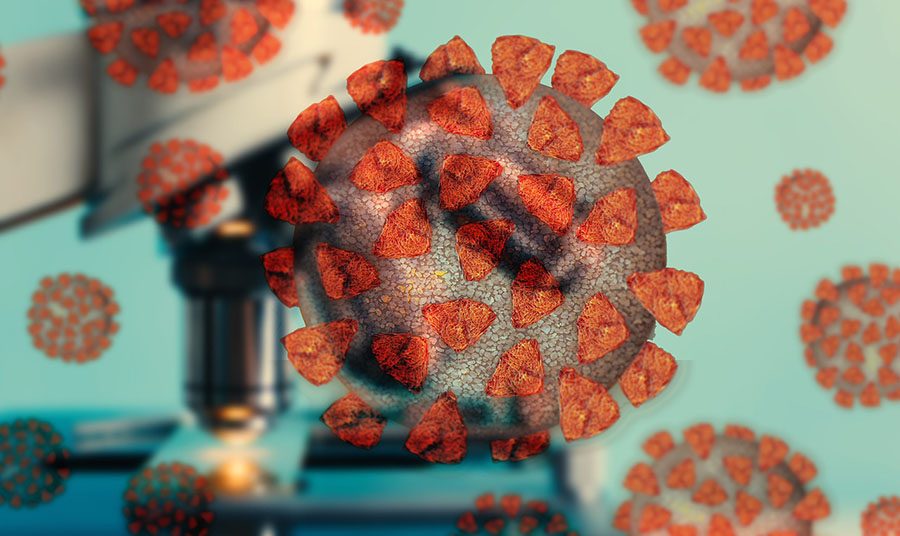The Life Sciences Report: Targeted cancer therapeutics are broadly defined. What advantages does Arno Therapeutics Inc.'s (ARNI:OTC.MKTS) platform present compared to technologies such as antibody drug conjugates and combination therapeutics?
Alexander Zukiwski: I'll use our lead development compound, onapristone, as an example. Onapristone has several potential advantages. It has demonstrated preclinical activity against a number of different tumor types, including endometrial, prostate and breast cancers. It is an orally available small molecule, so patients would not have to go back and forth to a hospital or clinic to receive intravenous (IV) administrations or subcutaneous injections, as required for therapeutic antibodies or antibody-drug conjugates. Onapristone is well tolerated, with a manageable safety profile as demonstrated by our Phase 1 study, in which onapristone was administered for up to 40 weeks. This latter point is important, because patients with cancer usually have multiple comorbidities that often require treatment with additional therapeutics. Having a medication like onapristone, which is well tolerated and doesn't cause side effects such as nausea, vomiting or diarrhea, is very important.
As a single agent, our Phase 1 clinical trial demonstrated that onapristone has clear and durable anticancer activity. This is important because patients could receive onapristone as a single medication, instead of combination or sequential therapeutics in the form of multiple pills, multiple injections or combinations thereof.
"Onapristone is well tolerated, with a manageable safety profile as demonstrated by our Phase 1 study."
But, because of its safety profile, we also believe that we can integrate onapristone into other treatment regimens, making it an integral part of an anticancer treatment program. We may actually be able to use a combined one-two punch with other historically well-tolerated hormonal treatments.
TLSR: How does onapristone work?
AZ: Onapristone is a type 1 antiprogestin molecule. It specifically binds to both types of the progesterone receptor. On binding, it inhibits receptor dimerization, receptor activation and progesterone receptor-mediated DNA transcription. Shutting down the progesterone receptor can potentially inhibit the cancer growth in progesterone receptor (PR)-positive diseases.
TLSR: Can you tell me more about the onapristone Phase 1 and Phase 2 clinical trials?
AZ: The initial Phase 1 study, using an extended release formulation in women with PR-positive tumors, is currently ongoing in France. The dose escalation phase of the study is complete, with 52 enrolled patients. The drug appears to be well tolerated, and an independent data review committee did not find any appreciable liver toxicity felt to be drug-related. From these results, the committee recommended a twice-daily administration of the 50-milligram, extended-release formulation as the Phase 2 dose. This study also revealed evidence of anticancer activity in patients who had received multiple prior therapies. These data will be the subject of a presentation at the June 2015 meeting of the American Society of Clinical Oncology (ASCO).
Our ongoing Phase 2 study includes patients with recurrent or metastatic endometrioid cancer whose tumors express the activated form of the progesterone receptor.
"Because of its safety profile, we believe we can integrate onapristone into other treatment regimens."
Additionally, the dose escalation component of an ongoing Phase 1/2 study in patients with castrate-resistant prostate cancer is at a point where the data review committee may be able to declare a recommended Phase 2 dose. The study has been amended to include study of onapristone in combination with abiraterone (Zytiga®; Janssen Biotech/ Johnson & Johnson [JNJ:NYSE]), an agent that blocks testosterone production and is approved for use to treat castrate-resistant prostate cancer. This additional study will be initiated on approval by regulatory and investigational review boards. Phase 2 will proceed once the onapristone plus abiraterone dose-escalation Phase 1 study is complete.
TLSR: When do you expect to complete clinical development of onapristone?
AZ: We hope to complete accrual to our Phase 2 study in patients with recurrent or metastatic endometrioid cancer sometime this year. We have had a series of meetings with U.S. and European health authorities regarding the design of a pivotal registration trial in patients with recurrent or metastatic endometrioid cancer. This study is projected to start in 2016, and will require at least 18 months to enroll. Assuming positive clinical data, we anticipate filing an application for U.S. Food and Drug Administration (FDA)/European Medicines Agency (EMA) approval of onapristone as a therapy for recurrent and metastatic endometrioid cancer following completion of the planned registration trial. The earliest time to bring onapristone to market would be in the 2018–2019 time frame.
In addition, we are interested in pursuing both prostate cancer and breast cancer indications, pending supportive data and available resources.
TLSR: Can companion diagnostics be developed for onapristone?
AZ: We have been working with a number of collaborators, including Leica Biosystems (a Danaher Corp. [DHR:NYSE] company), GE Healthcare (a subsidiary of General Electric Co. [GE:NYSE]) and Invivis Pharmaceuticals (private), to develop the first of several companion diagnostics to identify patients most likely to respond to onapristone. The companion diagnostic for onapristone is based on immunohistochemistry and identifies the activated form of the PR. The test is currently undergoing diagnostic validation and reproducibility studies. Development of this companion diagnostic has been the subject of a number of health authority meetings in both the U.S. and Europe. Using FDA guidelines, we intend to include this diagnostic as part of our onapristone registration study, with the goal of contemporaneous drug and diagnostic approval. Furthermore, second- and third-generation non-immunohistochemistry technologies are in development as additional companion diagnostic tests for onapristone.
TLSR: What other cancers can onapristone treat?
AZ: Onapristone could be utilized in tumor types in which the progesterone receptor is expressed and is contributing to the growth of the cancer. Some additional tumor types include ovarian and uterine sarcomas.
TLSR: Is your goal to develop onapristone and market it yourself, or are you going to position it for partnering, licensing or sale?
AZ: We would be open to discussing various options for collaborations. We would not turn a blind eye to a partnership, etc. But right now, the most important thing is to advance the program, hit those value inflection points and make data-driven and logical decisions on the future development of the compound.
TLSR: In addition to onapristone, Arno has other products in development. Tell me about AR-42.
AZ: AR-42 is a broad-spectrum deacetylase inhibitor of both histone and nonhistone proteins. It has demonstrated improved potency and preclinical activity against solid tumors and against hematological malignancies when compared to vorinostat (SAHA/Zolinza®), one of the first approved histone deacetylase (HDAC) inhibitors. We now know that AR-42 possesses additional histone-independent mechanisms, which may contribute to better in vitro and in vivo profiles. Recently, an investigator-initiated dose-escalation study of AR-42 in patients with both hematological malignancies and solid tumors was completed at Ohio State University (OSU). Additionally, we are supporting an ongoing investigator-initiated Phase 1 study evaluating the combination of AR-42 plus decitabine in hematological malignancies.
TLSR: Do you have specific hematological malignancies or solid tumors in mind for AR-42?
AZ: Potential targets include cutaneous T-cell lymphoma, peripheral T-cell lymphoma types and other hematological malignancies. We would expect that AR-42 would have a similar type of activity compared to currently marketed agents. Additionally, recent data published in The Journal of Urology show that the combination of AR-42 + cisplatin is active against bladder cancer stem cells. Thus, we are optimistic that AR-42 could have activity in different solid tumors.
TLSR: What can you tell me about Arno's third compound, AR-12?
AZ: There is evidence that AR-12 hits the glucose-regulated protein 78 (GRP 78) chaperone. This is a master regulator of unfolded protein response. For normal cells, it doesn't cause any major toxicity, but it has tremendous potential activity against various diseases. In addition, AR-12 inhibits heat shock protein (Hsp) 70 and Hsp 90 chaperones. Our colleagues at OSU demonstrated that AR-12 also induces and enhances autophagy in host effector cells.
"We are optimistic that AR-42 could have activity in different solid tumors."
Through a series of collaborations, AR-12 was shown to have in vitro activity against various microbial pathogens. What is exciting is that this novel mechanism of action potentially allows for development of a host-targeted antimicrobial agent. By targeting host cells instead of microbes, AR-12 may not be subject to typical drug resistance mechanisms reported for certain antiviral agents and antibiotics. We are currently developing a series of collaborations to further explore the potential of AR-12 in the antimicrobial space.
TLSR: What disease targets are of interest for your first studies?
AZ: AR-12 has published activity against certain fungal species. Furthermore, our colleagues from Virginia Commonwealth University have recently published data demonstrating AR-12 to have activity against a series of viruses and antibiotic-resistant bacteria. Before selecting disease targets, we want to understand the spectrum of activity. Next, we intend to focus development on those areas deemed to have the highest likelihood of success, and where there is a clear medical need.
TLSR: What are the catalysts or milestones that investors should look for with respect to each of your compounds?
AZ: First will be completion of the onapristone Phase 2 study in recurrent and metastatic endometrioid cancer. For AR-42, we are looking for an increasing amount of data from the Phase 2 studies in various tumor types. For AR-12, being at an opportunistic phase, we are determining the best avenue for development in the infectious disease space. All of these are possible over the next two years.
TLSR: Thank you for your insights.
Dr. Alexander Zukiwski is responsible for leading the clinical development and regulatory affairs teams supporting Arno's current and future pipeline of innovative therapies, focused on the treatment of cancer. He has more than 20 years of experience in global oncology drug development, and has supported the clinical evaluation and registration of many successful therapeutic agents, including Taxotere, Xeloda, Procrit/Eprex, Velcade, Yondelis and Doxil. Dr. Zukiwski was most recently executive vice president, clinical research, and chief medical officer at MedImmune Inc., where the organization he led was responsible for developing and implementing MedImmune's clinical research, medical affairs and safety strategies. Prior to joining MedImmune, Dr. Zukiwski held medical affairs and clinical development positions of increasing responsibility at Johnson & Johnson Pharmaceutical Research & Development LLC (JJPRD), Centocor and Ortho Biotech, including serving as therapeutic area head for oncology and acting head of oncology research and development. Before joining Johnson & Johnson, Dr. Zukiwski held clinical oncology positions at Hoffmann-LaRoche, Glaxo Wellcome and Rhone-Poulenc Rorer. He received a bachelor's degree in pharmacy from the University of Alberta and a Doctor of Medicine degree from the University of Calgary, and conducted post-graduate training at St. Thomas Hospital Medical Center in Akron, Ohio and the University of Texas MD Anderson Cancer Center.
Read what other experts are saying about:
Want to read more Life Sciences Report interviews like this? Sign up for our free e-newsletter, and you'll learn when new articles have been published. To see a list of recent interviews with industry analysts and commentators, visit our Interviews page.
DISCLOSURE:
1) Daniel E. Levy conducted this interview for Streetwise Reports LLC, publisher of The Gold Report, The Energy Report, The Life Sciences Report and The Mining Report, and provides services toStreetwise Reports as an independent contractor. He or his family owns shares of the company mentioned in this interview: None.
2) Arno Therapeutics Inc. paid Streetwise Reports to conduct, produce and distribute the interview.
3) Alexander Zukiwski had final approval of the content and is wholly responsible for the validity of the statements. Opinions expressed are the opinions of Alexander Zukiwski and not of Streetwise Reports or its officers.
4) The interview does not constitute investment advice. Each reader is encouraged to consult with his or her individual financial professional and any action a reader takes as a result of information presented here is his or her own responsibility. By opening this page, each reader accepts and agrees to Streetwise Reports' terms of use and full legal disclaimer.
5) From time to time, Streetwise Reports LLC and its directors, officers, employees or members of their families, as well as persons interviewed for articles and interviews on the site, may have a long or short position in securities mentioned. Directors, officers, employees or members of their families are prohibited from making purchases and/or sales of those securities in the open market or otherwise during the up-to-four-week interval from the time of the interview until after it publishes.




























































